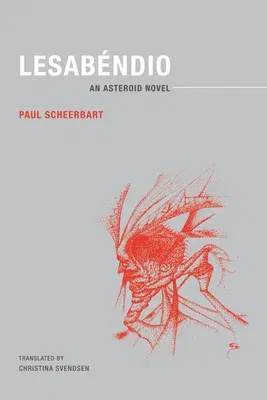"The serene and gentle amazement with which [Scheerbart] tells of
the strange natural laws of other worlds . . . makes him one of those
humorists who, like Lichtenberg or Jean Paul, seem never to forget that
the earth is a heavenly body." --Walter Benjamin
First published in German in 1913 and widely considered to be Paul
Scheerbart's masterpiece, Lesabéndio is an intergalactic utopian novel
that describes life on the planetoid Pallas, where rubbery
suction-footed life forms with telescopic eyes smoke bubble-weed in
mushroom meadows under violet skies and green stars. Amid the
conveyor-belt highways and lighthouses weaving together the mountains
and valleys, a visionary named Lesabéndio hatches a plan to build a
44-mile-high tower and employ architecture to connect the two halves of
their double star. A cosmic ecological fable, Scheerbart's novel was
admired by such architects as Bruno Taut and Walter Gropius, and such
thinkers as Walter Benjamin and Gershom Scholem (whose wedding present
to Benjamin was a copy of Lesabéndio). Benjamin had intended to devote
the concluding section of his lost manuscript "The True Politician" with
a discussion of the positive political possibilities embedded in
Scheerbart's "Asteroid Novel." As translator Christina Svendsen writes
in her introduction, "Lesabéndio helps us imagine an ecological
politics more daring than the conservative politics of preservation,
even as it reminds us that we are part of a larger galactic set of
interrelationships." This volume includes Alfred Kubin's illustrations
from the original German edition.
Paul Scheerbart (1863-1915) was a novelist, playwright, poet,
newspaper critic, draftsman, visionary, proponent of glass architecture
and would-be inventor of perpetual motion, who wrote fantastical fables
and interplanetary satires that were to influence Expressionist authors
and the German Dada movement, and which helped found German science
fiction.

